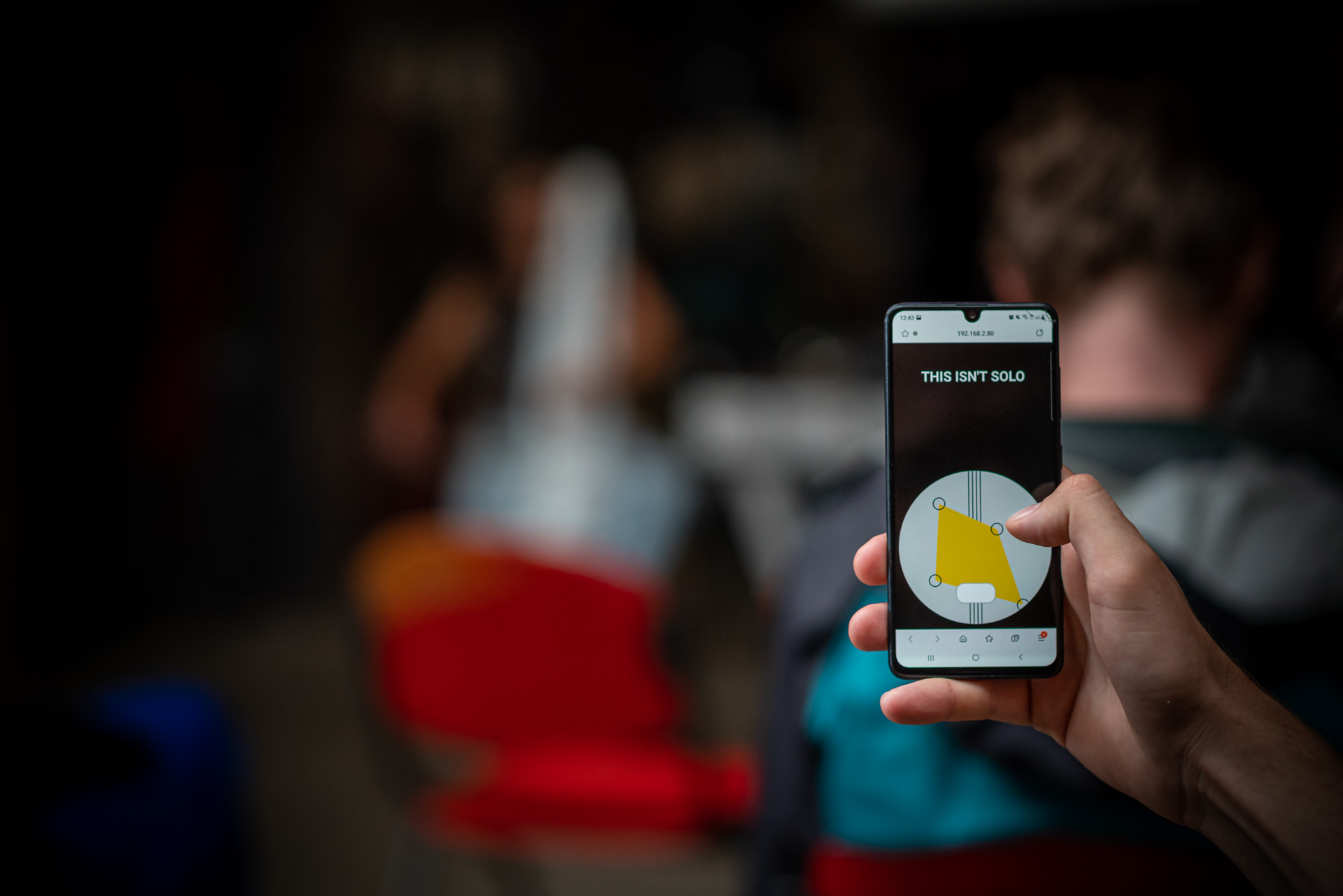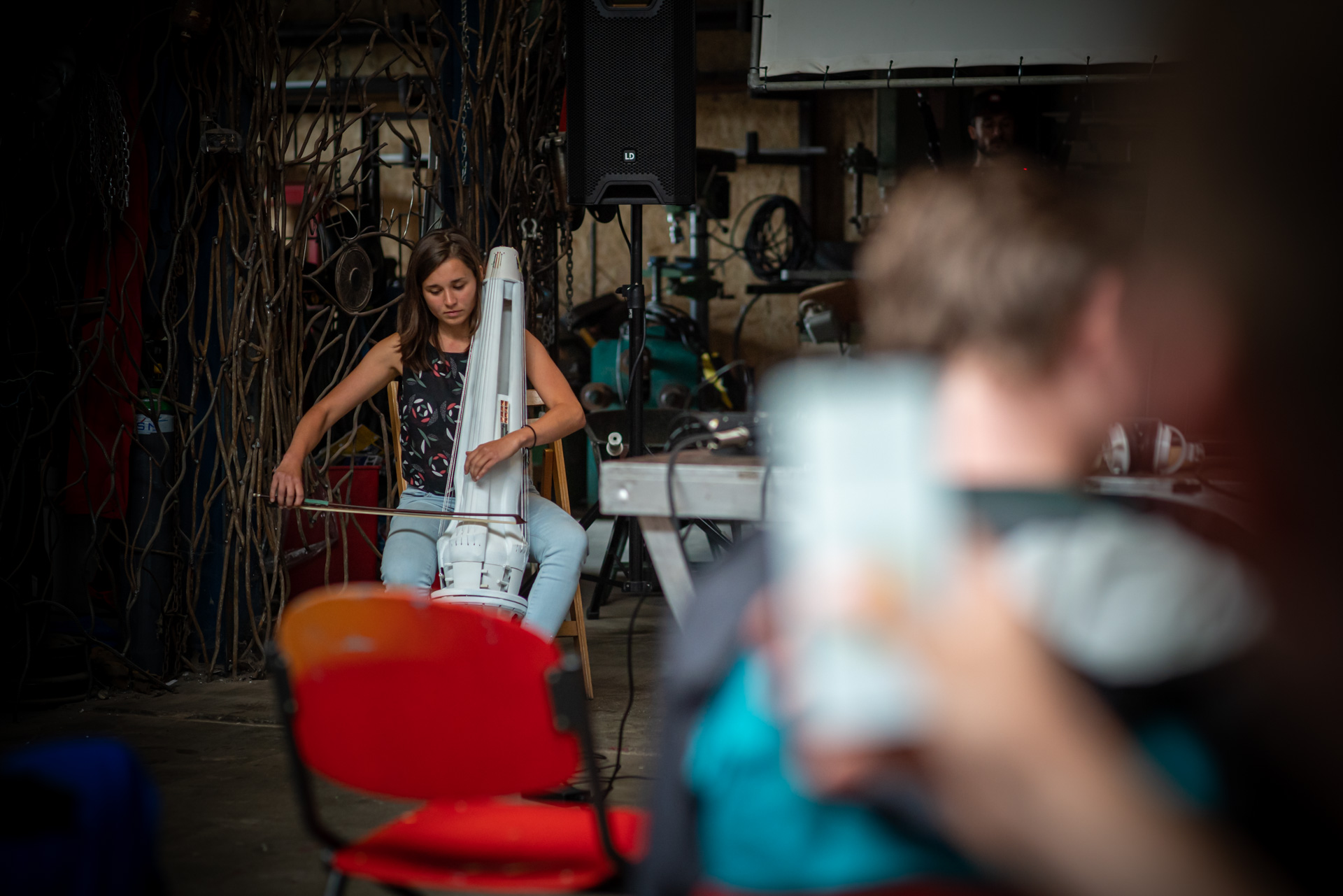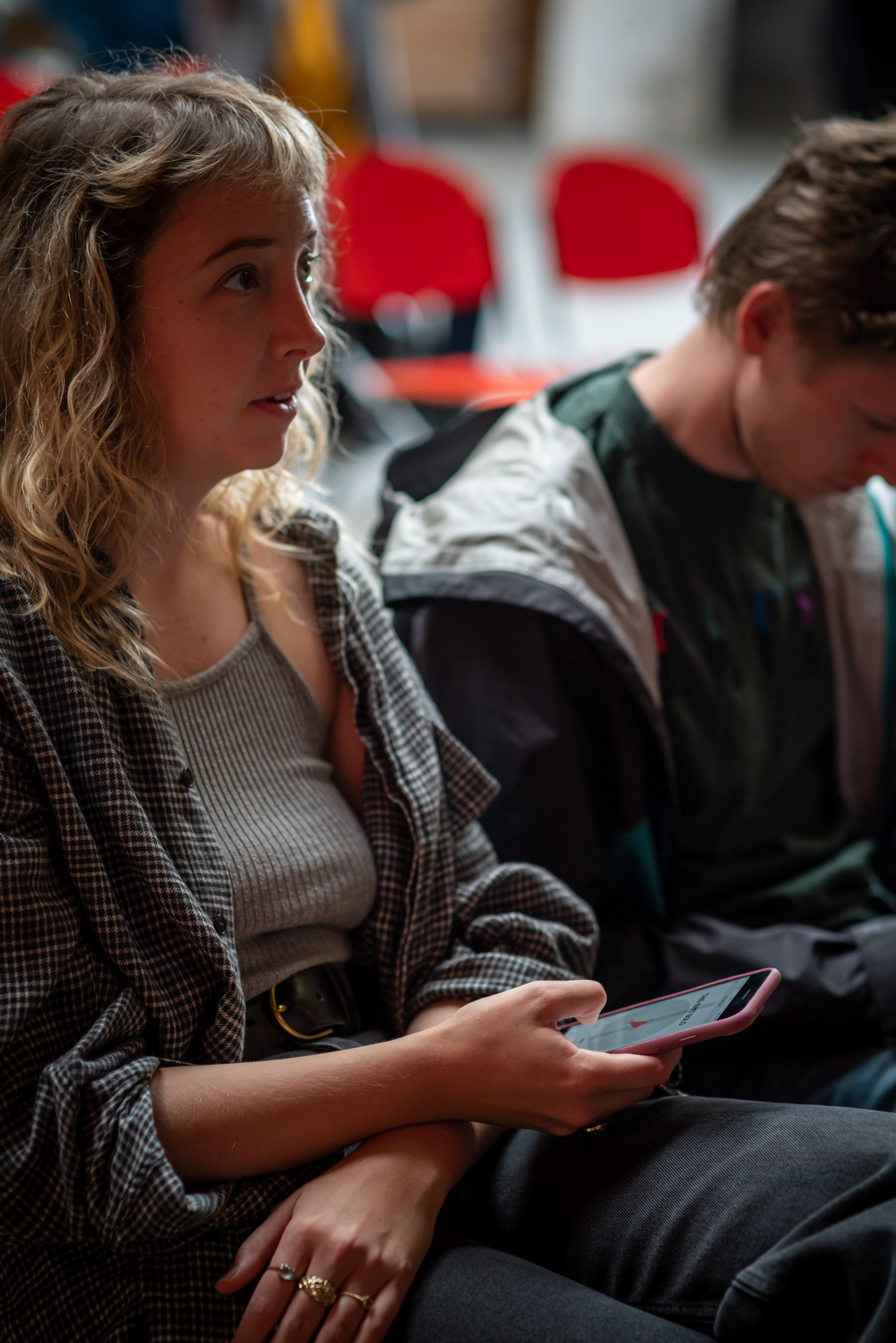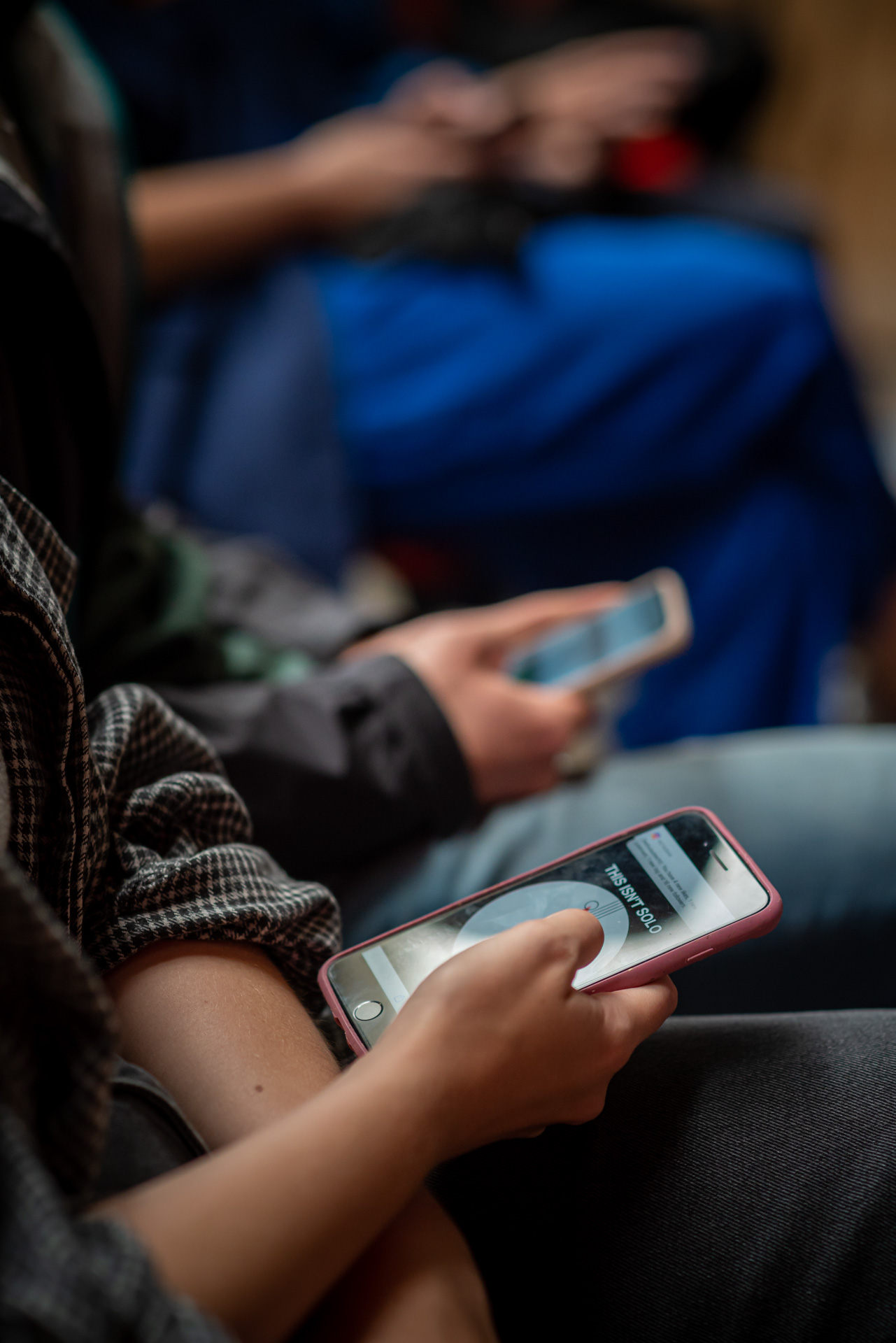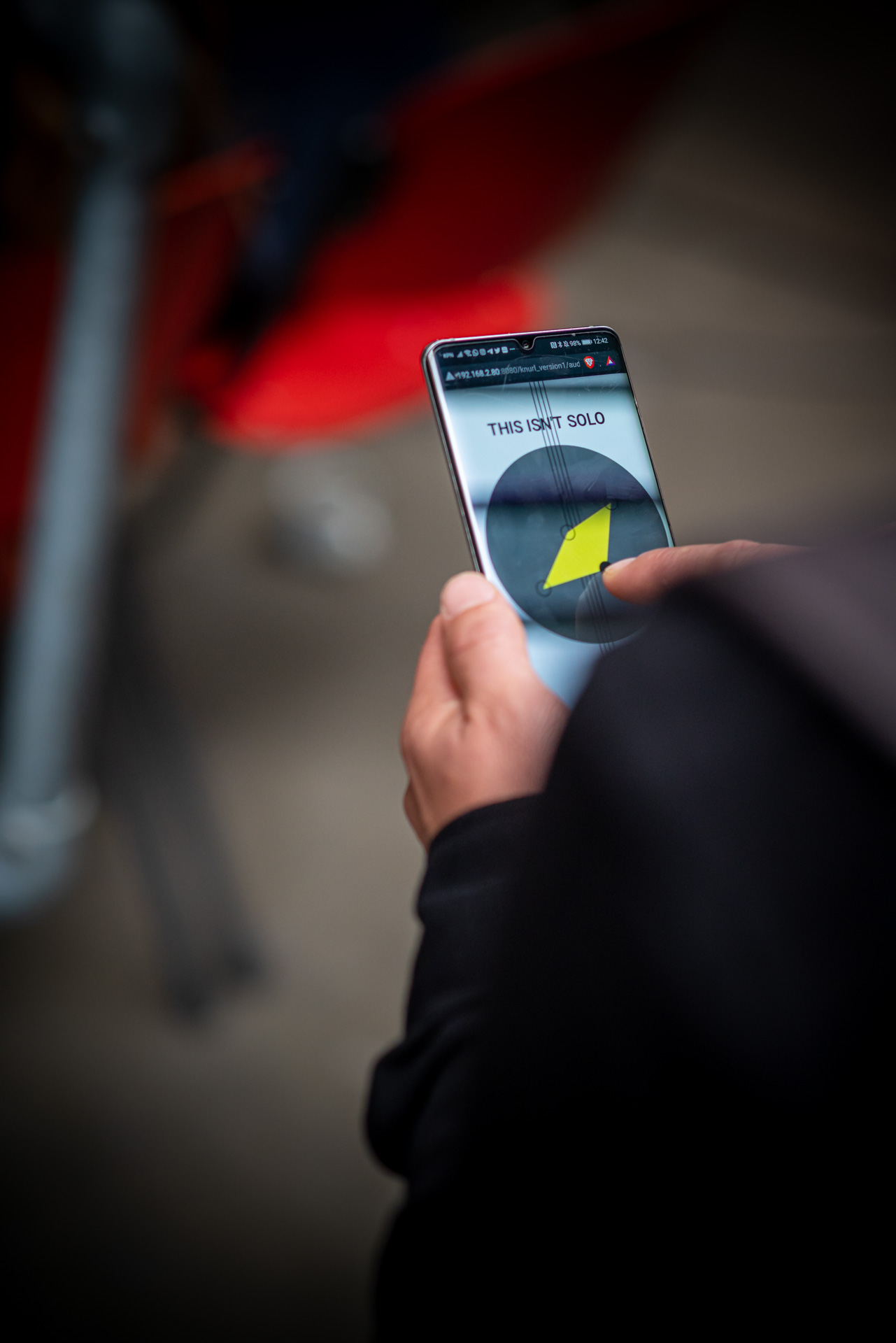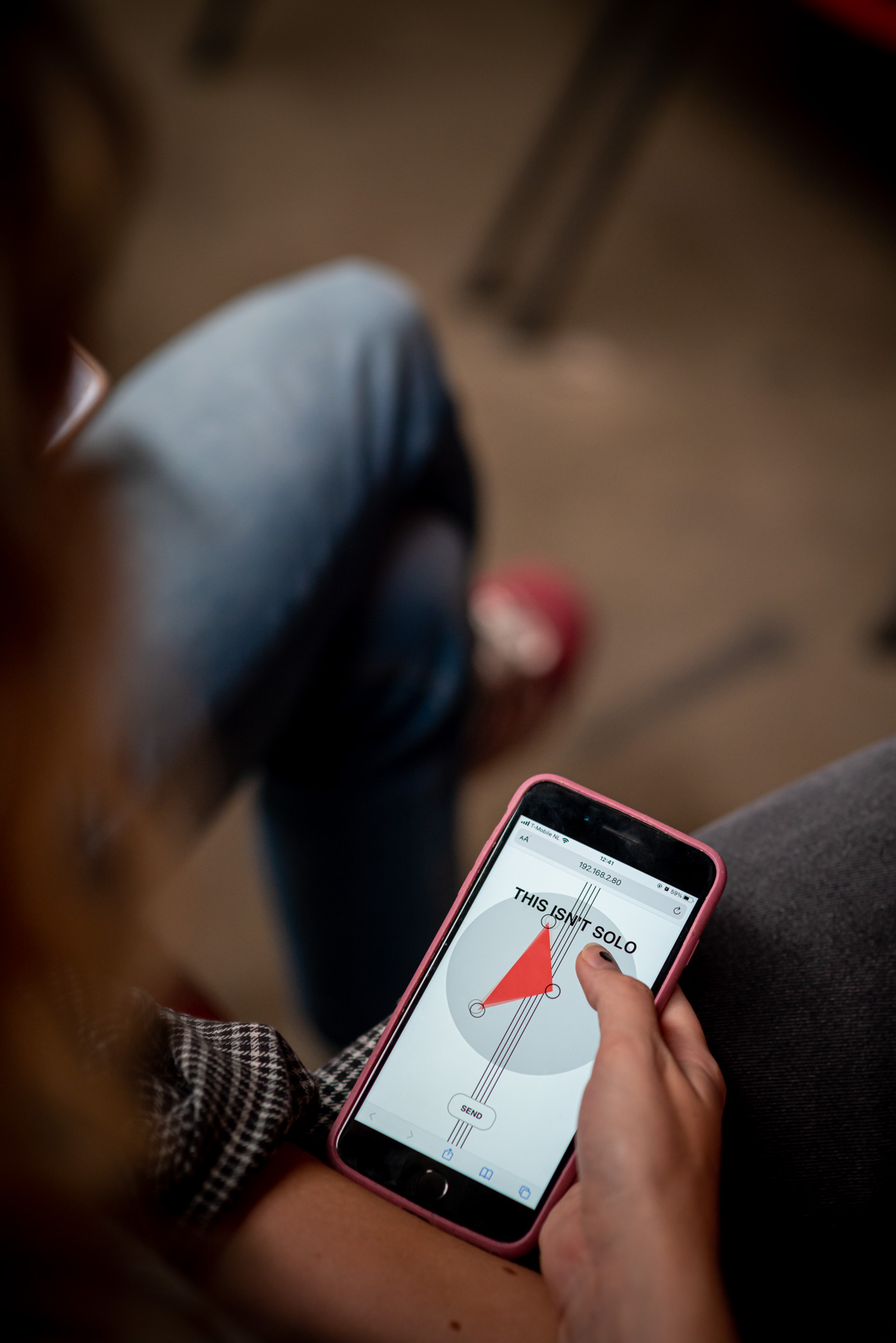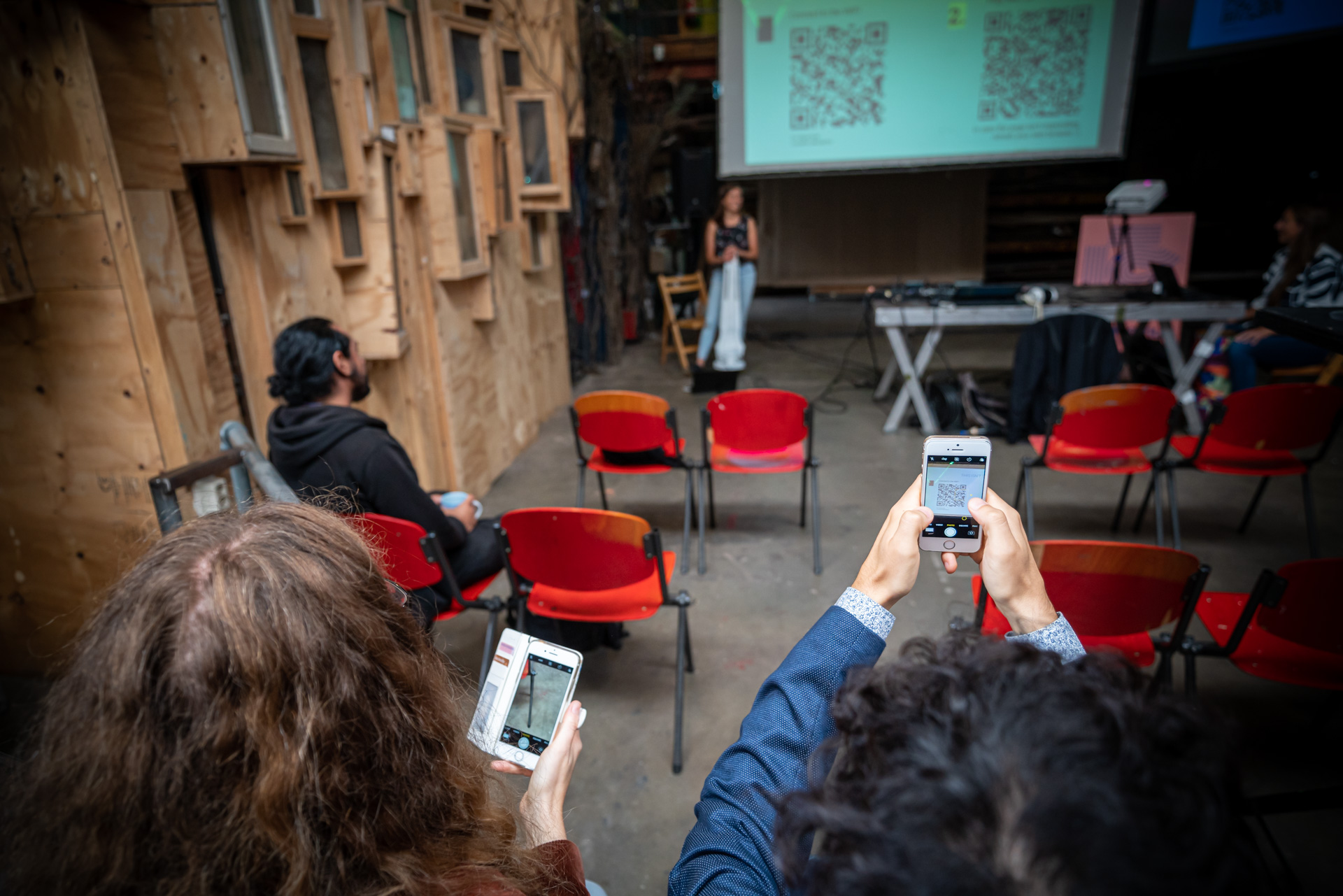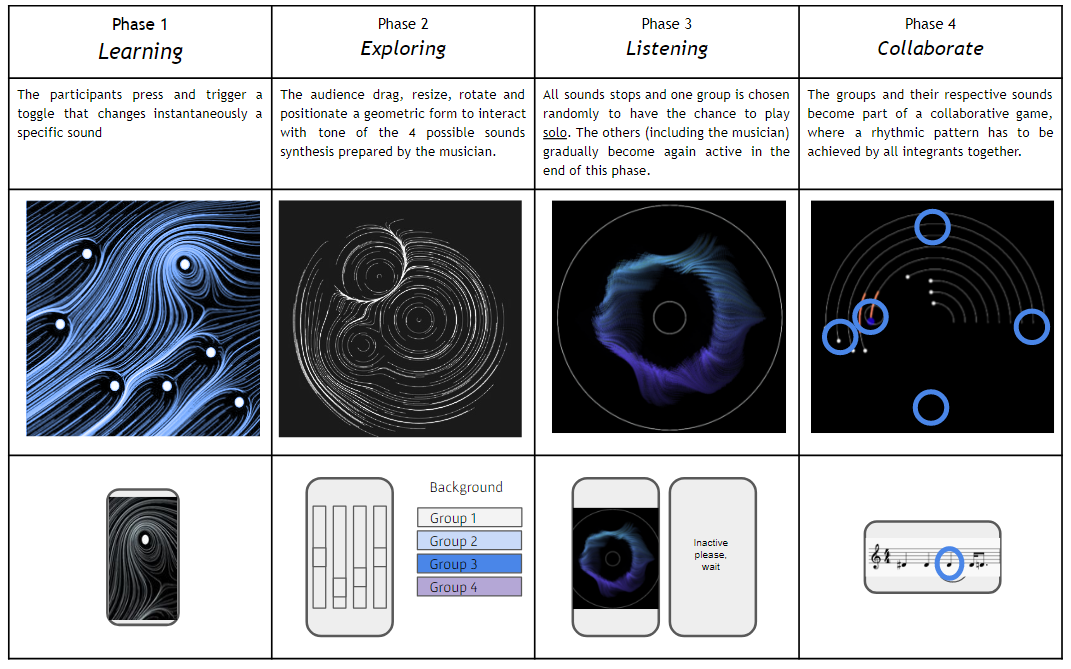Personally, music practice has always meant a collective experience. Four years ago, when I first started studying music composition in Leipzig, I became fascinated about exploring interactivity with the audience due to a reading from Darmstadt FerienKurse ‘l’ecolé de la claque’. At that time I created an artwork for a laptop ensemble ‘Don’t clap in the end’, where the laptop ensemble recorded the audience clapping their hands and used it for sonic manipulation. Since composing this piece, I have been aiming to share the control of my musical compositions with the public. As a performer, this is important for me because it is also a way to become aware of my space and to engage with it better.
An important step in this research process that helped me become more aware of space as a performer, occurred this year at Gaudeamus, when myself, Sabrina Vernhage, and Germán Greinier premiered the first version of my work titled ‘This isn’t solo’. This collaborative piece was important for me because audiences were able to draw geometrical forms using a web platform that was able to control the sounds of Knurl.
2.1.1.1. Context
In the past years, the lack of audience and its diversity (especially young audience members) has been a concern for most concert halls or art venues. Audience engagement became a criterion not only for product developers to understand the impact of their product but also for producers and art councils. Most of those organizations wanted to understand what motivates people to go to a concert in times when you can engage, watch,or listen to anything at any time by simply using a smartphone. According to McIntyre, “In orchestras, the level of engagement with the audience is low”. This was said in a research study conducted by the League of American orchestras, where it was discussed that most art venues do a great job at bringing new people into the halls but they have difficulty maintaining the increase in audience membership due to a lack of involvement with the orchestra in people’s daily lives.
From these studies, I understand the feedback people gave, with respect to what they are looking for most in modern classical music, corresponded to three main categories: social experience (the ability to meet new people or socialise with friends/family), music information (the power of music to share a content or message) and accessibility (if the global experience of going to a music concert is welcoming the audience). I became interested in observing and experimenting with these categories as a goal to achieve in my own music composition, allowing people to rediscover the experience of music performance in the XXI century, and trying to achieve results such as respect, comfort, shareability, reflection and self expression.
Being open to listening and interacting with the public also has meant redefining certain roles, rules and relationships between the audience and performers. Therefore, it became necessary to produce a tool that could promote contact and communication between these two groups. In 2021, we designed a web platform called Knurl lab, which we used to share the control of musical events between the audience of Knurl. The following part of this research reports the application of this platform into a music composition.
2.1.1.2. Goals
The goal of this project is to design an artwork called ‘This isn’t solo'. This is a multimedia performance that shares control with the audience of an electroacoustic and interactive instrument: Knurl. Knurl lab is a web platform designed to allow this mechanism, designed in collaboration with Sabrina Vernhage and German Greiner. This collaboration connects with multidisciplinary artists that are also interested in exploring interactivity in their practice. This performance is an artistic exploration about audience engagement, revealing listener participation in an abstract communication with digital art and music.
2.1.1.3. Starting point
The first discussions were related to strategies and design formats that could achieve our artistic goal, with already some primary concerts about avoiding chaos or the sense of non music direction. Most of the time, those discussions seemed to reflect the boundaries between limitation vs orientation: avoiding the listener to feel confused, uninterested or irrelevant to the music events. The idea was to be as transparent and clear as possible so that a communication between artistic ideas could be created by this collaboration. The first design phase explored the ability of creative drawing as a tool to abstractly represent music communication and expression.
From the technical part, transparency became also an issue when the collaborators had confronted the challenge of receiving a big amount of OSC messages. In order to avoid chaos, unwanted sound or high CPU usage, it was decided to filter the speed of new messages. The participants were also not allowed to trigger new sounds, only short sound events or changing variables of each synthesis. The audience is divided randomly into 4 groups, each of them is responsible to control the variables of one of the voices.
Filtering information also became a solution for better perceiving this experience, since we were also concerned about people looking too much at their smartphones instead of enjoying the environment. In one of the sections, we designed some sort of trigger line in the main screen, where the drawings of each participant would activate sound changes after passing this vertical line. With this strategy, people were engaged to trigger less times in order to listen better to their impact on Knurl’s sound.
2.1.1.4. Application
Based on some studies about ‘user experience’, I designed a music structure based on 4 phase experiences that humans used to sense when experiencing a new platform/tool (not per se in a linear way). They can be described as: Learning phase, Exploratory phase, Observation, Redesign. Based on those phases, the web platform structure was designed to offer those experiences in different sections, having 4 different web pages that were being selected by Sabrina live. Those phases also guide tha participant to experience the performance from a introspective to a extroverted music approach. The goal is make audience feel included and collaborating with each other.
Each phase contains a different relationship between triggers and musicas events. The idea is to offer a space for each experience, such as a moment only to listen, observe the performance or to react to it.
First cycle - Premiere at Gaudeamus
The premiere of this experience happened in Gaudeamus 2021. Sabrina and I performed and assisted the experience with a group of around 20 participants. A documentation of this performance can be found online.
When the audience started to get involved in the performance, the stage had become borderless. During a short explanation in the beginning, few people got connected with the instrument in a few seconds while other people were still listening and figuring out how to connect. In this performance I was mostly improvising and probably it was the best choice for that moment. It was interesting to realize that the participants felt encouraged to try and interact much more by its less exposure to the consequences. The degree of exposure for participation is less than any other performance, including the musician since the responsibility is also shared. Nevertheless, I would summarize that in this performance, the musician gains more responsibility, having to be flexible to all the possible circumstances.
The whole group of participants also gained some spatial awareness, since some people were asking for help on how to connect or changing their places to see the musician a bit better. I sensed also that most participants were also creatively responding to the sensations I was presenting, indulging in chaotic movement , softness or freedom. The audience really responded to my lead to chaos in the end, they also followed patterns between each other and they were repeating their clicks constantly.
Second cycle - Graduation performance in Amare
After reflecting about the first performance, we started to work on a a second version of the web platform and the music composition where the partipants and the musician would become part of the visual projection. By implementing the projection into the stage and auditory place in a single space, we except to produce a more integrative and inclusive feeling for all participants. The visuals are projected into the floor where the performer(s) and the audience would be around it. The performance at Theater Carre produced in 2021 became a reference for this implementation (picture below). This performance will be presented in Amare, on the 27th June 2022.
In this version, Sabrina and I are still working on 4 different designs for each user experience. The new version of the composition "This isn't solo" develops a specific melody that becomes an important element for the learning and the collaboration phase. In the collaboration phase, the audience has to repeat this melody playing together when the trigger pass by their located position
2.1.1.5. Findings
After the presentation in Gaudeamus (2021), I received few comments from people with a positive impression, most mentioned a few times that the artwork has the potential for expansion or application into other formats and instruments. Looking at the recordings, most people are quite engaged and interacting with each other. In the future, it would be nice to design gestures that the musician and the audience could build together, maybe tracking motion sensing from their phone data. We also wanted to allow the musician to trigger each scene/section of the performance.
One of the main findings of this experience was about realizing the potential of technology engaging us to interact without communication. This project also reflects the potential of this tool for removing the barrier of feeling exposed towards an active participation.
Could this specific performance become a hint or even a format to improve audience engagement into musical performances? To answer this research question, more research and trials will be produce in 2022-2024 involving also other performers and audiences. We would love to see this platform taking shape into other performers and musicians.
